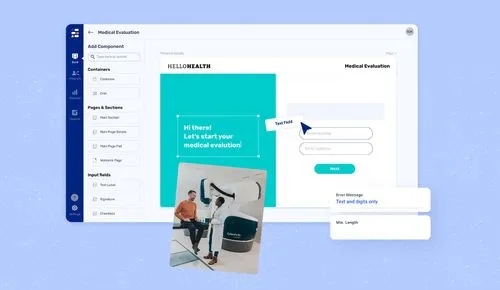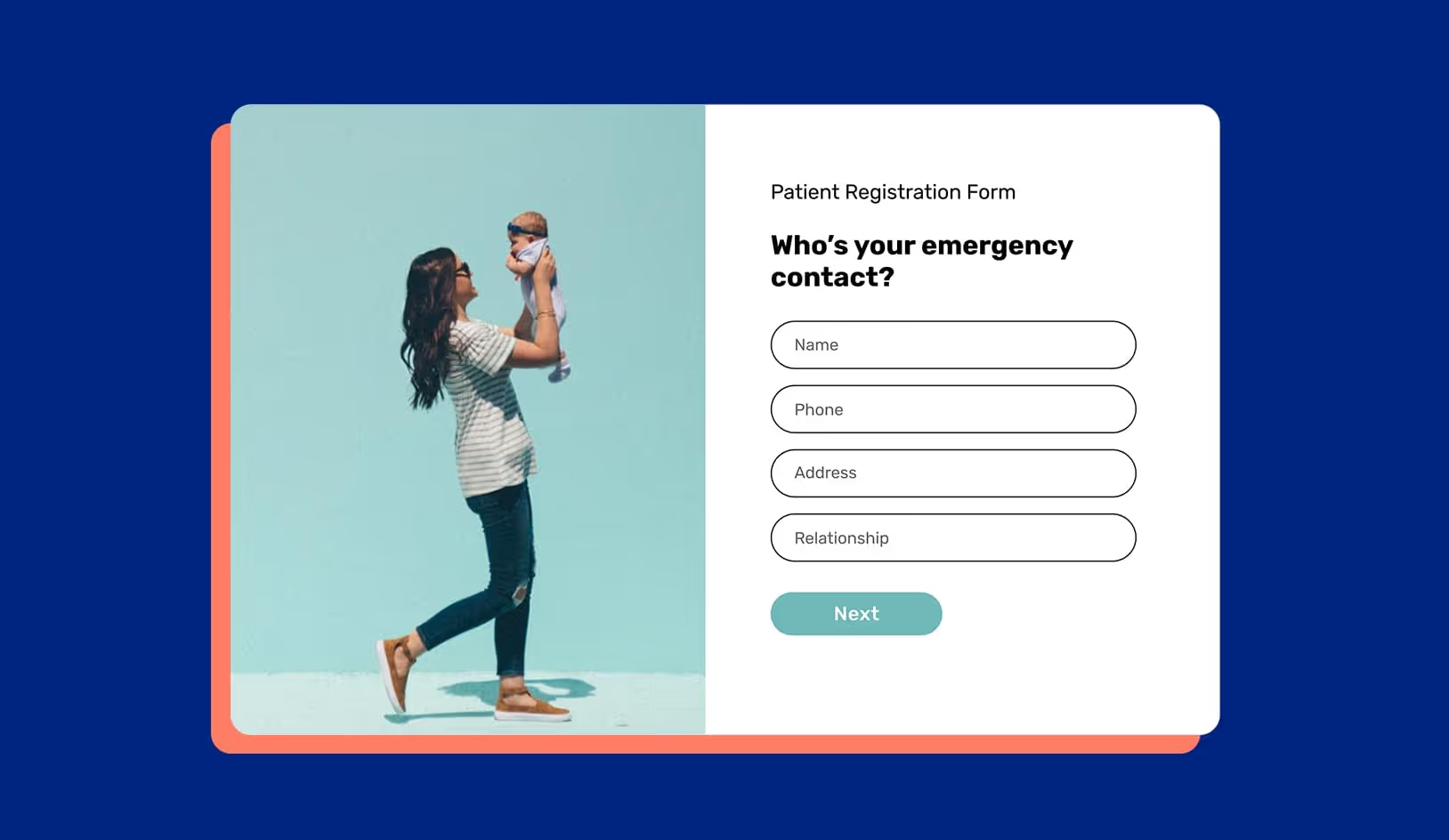Today, technology is changing fast, and every industry is trying to keep up. As we step into the future, industries across the globe are continuously evolving to stay relevant in the face of rapidly changing technology.
One of those industries, health insurance, is getting a big makeover. The future of health insurance, according to numerous experts and thought leaders, is undeniably digital. At the heart of this digital transformation, no-code platforms are emerging as the torchbearers. For health insurance companies, these platforms could make things run more smoothly, improve customer service, and open up new possibilities. Here's how:
No-code platforms: the game changers
No-code platforms are changing the way we think about software development. Instead of needing to know how to code, these platforms let people create software applications using simple drag-and-drop interfaces. This democratization of programming allows non-technical professionals to play an active role in the software development process.
For developers, and business professionals alike, this means that innovative ideas can be transformed into functional applications faster and with less cost. These platforms have the potential to streamline operations, enhance customer experience, and unlock unprecedented avenues of growth.
Here’s how no-code platforms are set to transform health insurance:
1. Enhanced customer experience
Customers are more important than ever in the competitive health insurance market. No-code platforms can help improve the customer experience by making it easier to create user-friendly digital services. These platforms can help develop interactive portals where customers can easily purchase insurance, file claims, and get customer support, all without needing to interact with service representatives.
Importantly, there is the potential for increased revenue as a result of improved customer experiences. No-code platforms can facilitate the creation of highly responsive, user-friendly interfaces, leading to higher customer satisfaction and retention rates. With happier customers, companies can expect an increase in repeat business and customer referrals, driving revenue upward.
2. Streamlined operations
Streamlining operations within the health insurance sector is a key benefit of adopting no-code platforms. Many of the industry's standard processes, such as underwriting and claims management, are notoriously complex, multi-layered, and time-consuming. With a conventional system, these processes often involve multiple steps, different departments, and manual tasks that can slow things down and introduce the possibility of errors.
No-code platforms, however, offer an effective solution to this challenge. They enable business teams to swiftly construct and modify workflows, allowing a smoother transition between stages in the process. For instance, a health insurance company can use a no-code platform to build a workflow that integrates application processing, policy issuance, and claims handling in a seamless manner. By doing so, the company can drastically reduce the time taken for each stage, leading to quicker service delivery.
Moreover, the flexibility of no-code platforms allows for real-time adjustments as and when required. If a bottleneck is identified in the process, it can be quickly addressed by altering the workflow, without the need for complex code changes.
The reduction in manual tasks through automation is another significant advantage. Tasks that
once required human intervention, such as data entry or document verification, can now be automated, freeing up staff to focus on more strategic, customer-focused tasks. This can lead to improved job satisfaction and productivity within the team, as well as an enhanced customer experience.
In addition, no-code platforms can help to improve data accuracy by minimizing manual data handling. By reducing the chances of human error, companies can ensure a higher level of data integrity and make better-informed decisions.
3. Cost efficiency
No-code platforms have a profound impact on cost efficiency for a variety of reasons.
First and foremost, they significantly reduce the necessity for extensive coding expertise. In a traditional software development scenario, companies would need to invest heavily in hiring specialized software developers. These professionals command high salaries due to the intricate and technical nature of their work. No-code platforms circumvent this need by making the application development process accessible to a wider range of employees, which can translate into considerable savings on payroll expenses.
Moreover, no-code platforms allow for rapid application development. The time needed to bring an application from the concept stage to a fully-functioning product is drastically reduced, as the need for complex, time-consuming coding is eliminated. This results in a much shorter turnaround time for projects, which further drives cost savings. This swift development cycle not only reduces labor costs but also allows companies to react more quickly to market changes and customer demands.
In terms of maintenance, applications developed using no-code platforms are easier and less expensive to update and modify, thanks to their flexible and user-friendly structure. In contrast, traditionally-coded applications often require developer intervention for any adjustments, which can be both costly and time-consuming.
4. Data management and analysis
Health insurance companies deal with a staggering amount of data on a daily basis. This can range from personal information of policyholders, health records, policy details, to claims data, and more. Managing this volume of data and extracting valuable insights from it can indeed be an overwhelming task, especially when using traditional systems that may not have been designed to handle such complexity.
However, no-code platforms are engineered to tackle precisely these kinds of challenges. These platforms allow for the creation of applications that are tailored to handle and analyze large datasets. The drag-and-drop interfaces of no-code platforms enable the design of applications that can collate, organize, and analyze data in an intuitive and user-friendly manner.

5. Compliance and security
Compliance with regulations is a critical concern for health insurance companies. No-code platforms can automate compliance checks and ensure all applications are in line with current regulations. Additionally, many of these platforms come with robust audit and security measures, ensuring data privacy and reducing the risk of breaches.
6. Innovation and growth
In a sector that thrives on innovation and progress, no-code platforms serve as powerful catalysts for both. By making software development accessible to non-technical professionals, these platforms break down the barriers between technical and non-technical teams. This means that health insurance employees who understand the complexities and nuances of the industry can now participate directly in creating solutions.
For example, a claims manager with no programming background but a deep understanding of the claims process can utilize a no-code platform to develop a more efficient claims processing system. This hands-on contribution from different perspectives can lead to the creation of more refined, user-centric products and services.
Furthermore, this inclusive approach to software development can spark new ideas and encourage creativity. When employees from diverse backgrounds and skill sets are given the tools and opportunities to innovate, the results can be truly transformative. This could mean the development of novel insurance products, the enhancement of existing services, or even the discovery of entirely new ways to interact with policyholders.
The bottom line
As we navigate through the digital transformation of the health insurance industry, no-code platforms stand out as powerful tools for change. Their ability to streamline operations, improve cost efficiency, enhance data management and analysis, bolster compliance and security, and foster innovation makes them an essential part of the industry's future.
No-code platforms facilitate innovation and fuel growth in several ways.
- By introducing innovative and improved services, health insurance companies can attract new customers and retain existing ones, leading to an expanded customer base.
- Innovation can lead to operational efficiencies, which can save costs and increase profitability.
- Innovative companies are often viewed favorably by investors, which can lead to increased investment and funding.
In essence, no-code platforms not only facilitate innovation and growth but also contribute to maintaining a competitive edge. By staying ahead of technological trends and meeting the evolving needs of policyholders, health insurance companies can ensure their continued success in a dynamic and competitive marketplace.
As we look forward, it's clear that these platforms are not just an innovative trend, but a necessary strategic shift that health insurance providers need to adopt to stay relevant and competitive in the digital age.





